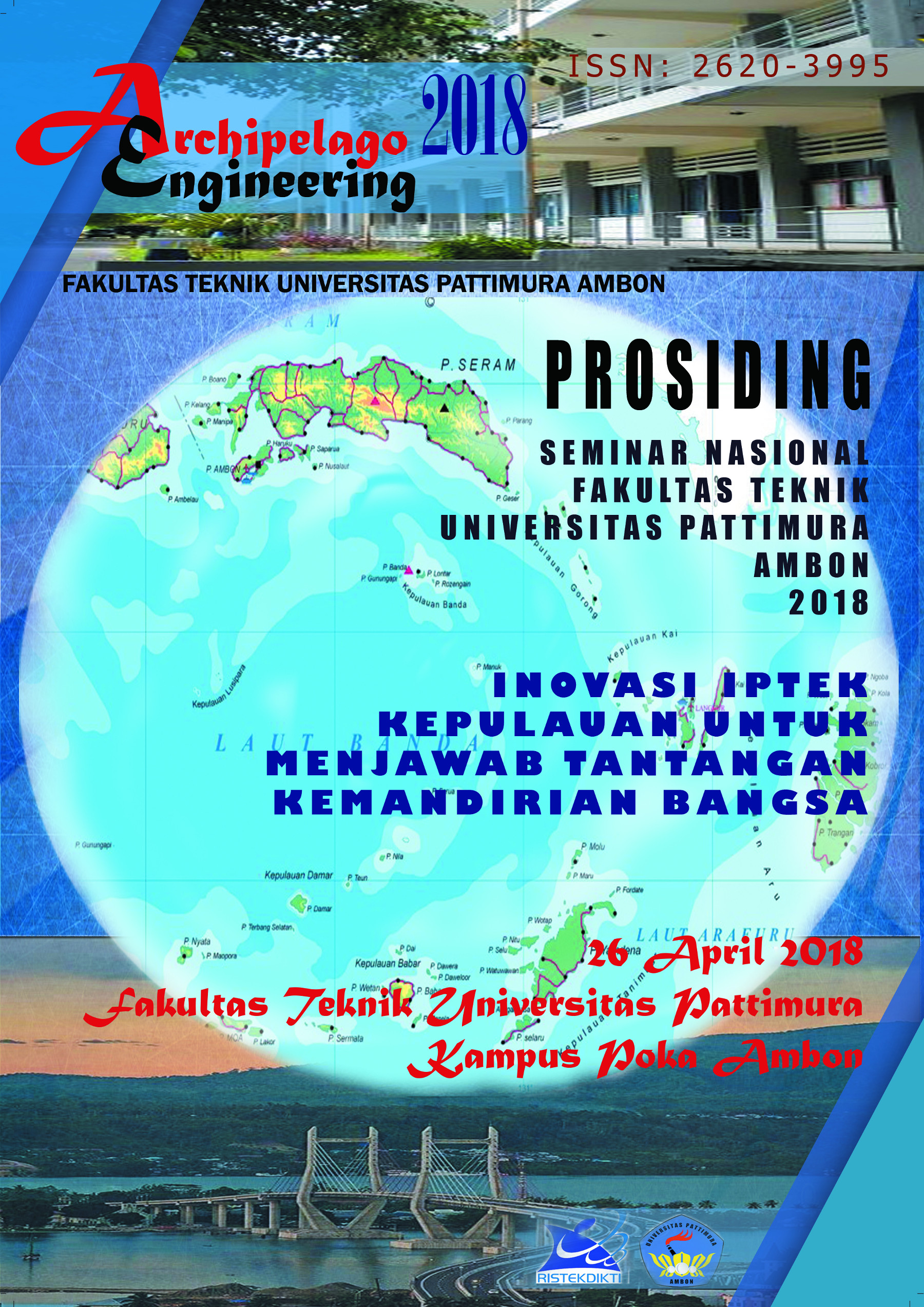POTENSI PENINGKATAN EFISIENSI KAPAL MASA DEPAN: TINJAUAN ASPEK DESAIN DAN OPERASIONAL KAPAL
Abstract
Fenomena kerusakan lingkungan seperti emisi gas rumah kaca, polusi, sibakan gelombang (wash) dan kebisingan
cenderung meningkat. Masalah lingkungan ini ditinjau dari faktor ekonomi, seperti kenaikan biaya kebutuhan bahan
bakar, merekomendasikan usaha untuk meminimalkan kebutuhan daya dorong kapal.
Berbagai metode dan perangkat untuk mengurangi daya dorong ditinjau dan dibahas. Metode yang paling
menguntungkan, dari sudut pandang yang layak dan praktis, diidentifikasi dan diukur. Ditemukan bahwa potensi
pengurangan pada hambatan bentuk lambung yang ada relatif kecil, namun pengoptimalan interaksi lambung,
baling-baling dan kemudi menawarkan prospek perbaikan yang sangat menjanjikan. Potensi penghematan terbesar
pada daya yang timbul adalah dari strategi optimasi strategi operasional seperti pemilihan desain trim, kecepatan dan
rute berdasarkan cuaca.
Potensi konflik kepentingan saat mempertimbangkan persyaratan ekonomi dan lingkungan diselidiki dan
didiskusikan. Metodologi dan prosedur perancangan yang sesuai, dengan mempertimbangkan faktor ekonomi dan
lingkungan, disarankan untuk merancang kapal masa depan.
Downloads
References
of the Attained Energy Efficiency Design Index
(EEDI) for new ships. Resolution of the Marine
Protection Environment Committee,
MEPC.212(63), 2012.
2.IMO. Guidelines on Survey and Certification of the
Energy Efficiency Design Index (EEDI).
Resolution of the Marine Protection
Environment Committee, MEPC.214(63), 2012.
3. TURNOCK, S.R. Minimising the environmental
impact of shipping: clean ships for a new
century. Proceedings of Marienv’95. Society of
Naval Architects of Japan, 1995.
4. JAMES, M.C., TURNOCK, S.R. and HUDSON,
D.A. Design of retrofit devices using CFD,
validated with wind tunnel tests. NUTTS,
2012: 15th Numerical Towing Tank
Symposium, Cortona, Italy, 2012.
5. MARPOL, Convention of IMO, Annex VI,
2008.
6. MCA, Maritime and Coastguard Agency,
Merchant Shipping Notice 1819 (M + F), 2008.
7. WOODYARD, D.F. Pounder’s Marine Diesel
Engines and Gas Turbines. 8th Edition.
Butterworth-Heinemann, Oxford, UK, 2004.
8. MOLLAND, A.F. (ed) The Maritime
Engineering Reference Book. Butterworth-
Heinemann, Oxford, UK, 2008.
9. MOLLAND, A.F.,WELLICOME, J.F. and
COUSER, P.R.Resistance experiments on a
systematic series of high speed displacement
catamaran forms: Variation of lengthdisplacement
ratio and breadth-draught ratio.
Transactions of the Royal Institution of Naval
Architects,Vol. 138, 1996.
10. MOLLAND, A.F., WILSON, P.A., TAUNTON,
D.J., CHANDRAPRABHA, S. and GHANI,
P.A. Resistance and wash Measurements on a
Series of High Speed Displacement Monohull
and Catamaran Forms in Shallow Water.
Transactions of the Royal Institution of Naval
Architects, Vol. 146, 2004.
11. HOCHKIRCH, K. and BERTRAM, V. Hull
optimisation for fuel efficiency – past, present
future. Eleventh International Conference on
Computer and IT Applications in the Maritime
Industries, COMPIT’12, Liege, Belgium, 2012.
12. PLOEG, A van der. Object functions for
optimising a ship’s aft body. Eleventh
International Conference on Computer and IT
Applications in the Maritime Industries,
COMPIT’12, Liege, Belgium, 2012.
13. BSRA Methodical Series Experiments on Single-
Screw Ocean-Going Merchant Ship Forms.
Extended and Revised Overall Analysis. BSRA
Report NS333, 1971.
14. KRACHT, A.M. Design of bulbous bows.
Transactions of the Society of Naval Architects
and Marine Engineers, Vol. 86, 1978.
15. HOCHKIRCH, K. and BERTRAM, V. Slow
steaming bulbous bow optimisation for a large
container ship. Eighth International Conference
on Computer and IT Applications in the
Maritime Industries, COMPIT’09, Budapest,
2009.
16. ANON The SHI SAVER Fin. Marine Power
and Propulsion Supplement, The Naval
Architect, RINA, London, 2008.
17. CANDRIES, M. and ATLAR, M. On the drag
and roughness characteristics of antifoulings.
Transactions of the Royal Institution of Naval
Architects, Vol.145, 2003.
18. TOWNSIN, R.L., BYRNE, D., MILNE, A. and
SVENSEN, T. E. Speed, power and roughness:
The economics of outer bottom maintenance.
Transactions of the Royal Institution of Naval
Architects, Vol.122, 1980.
19. TOWNSIN, R.L., BYRNE, D., SVENSEN, T.
E. and MILNE, A. Estimating the technical and
economic penalties of hull and propeller
roughness. Transactions of the Society of Naval
Architects and Marine Engineers, 1981.
20. TOWNSIN, R.L., BYRNE, D., SVENSEN, T. E.
and MILNE, A. Fuel economy due to
improvements in ship hull roughness 1976-
1986. International Shipbuilding Progress,
Vol.33, 1986.
21. MOLLAND, A.F and TURNOCK, S.R. Marine
Rudders and Control Surfaces. Butterworth-
Heinemann, Oxford, UK. 2007.
22. ITTC Report of Resistance Committee, 26th
International Towing Tank Conference, Rio de
Janeiro, 2011.
23. ISHERWOOD, R.M. Wind Resistance of
Merchant Ships. Transactions of the
Royal Institution of Naval Architects, Vol. 115,
1973.
24. BERLEKOM, Van W.B. Wind Forces on
Modern Ship Forms – Effects on Performance.
Transactions of the North East Institute of
Engineers and shipbuilders, Vol. 97, No. 4,
1981.
25. GOULD, R.W.F. The Estimation of Wind
Loadings on Ship Superstructures. R.I.N.A.
Marine Technology Monograph No. 8, 1982.
26. MOLLAND, A.F. and BARBEAU, T-E.An
Investigation into the Aerodynamic Drag on the
Superstructures of Fast Catamarans.
Transactions of the Royal Institution of Naval
Architects,Vol.145, 2003.
27. HOERNER, S.F. Fluid-Dynamic Drag. publ.
by the Author. Washington, USA, 1965
28. HUCHO, W-H. (Editor) Aerodynamics of Road
Vehicles. 4th Edition. Society ofAutomotive
Engineers, Inc., USA, 1998.
29. DYNE, G. The efficiency of a propeller in
uniform flow. Transactions of the
RoyalInstitution of Naval Architects, Vol.136,
1994.
30. DYNE, G. The principles of propulsion
optimisation. Transactions of the
RoyalInstitution of Naval Architects, Vol.137,
1995
31. MOLLAND, A.F., TURNOCK, S.R. and
HUDSON, D.A. Ship Resistance and
Propulsion. Cambridge University Press,
Cambridge, UK, 2011.
32. CARLTON, J.S. Marine Propellers and
Propulsion. Third Edition. Butterworth-
Heinemann, Oxford, UK, 2012.
33. HARBAUGH, K.H. and BLOUNT, D.L. An
experimental study of a high performance
tunnel craft. Paper H, Society of Naval
Architects and Marine Engineers, Spring
Meeting, 1973.
34. WINTERS, R.D.E. Application of a large
propeller to a container ship with keel drag.
Transactions of the Royal Institution of Naval
Architects, Vol.140, 1998.
35. SEO, K-C., ATLAR, M. and SAMPSON, R.
Hydrodynamic development of inclined keel –
Resistance. Ocean Engineering, No. 47, 2012,
pp 7-18.
36. SEO, K-C., ATLAR, M. and Wang, D.
Hydrodynamic development of inclined keel
hull – Propulsion. Ocean Engineering. Vol.63,
2013. pp 7-18.
37. ANON. Streamlining project makes efficiency
gains. The Naval Architect, RINA, London,
January, 2013.
38. ANON (2008a) The Mewis Duct. Marine
Power and Propulsion Supplement, The Naval
Architect, RINA, London, 2008.
39. ANON (2008b) The integrated propulsion
manoeuvring system. Ship and Boat
International, RINA, London,
September/October 2008.
40. ECSA. Climatic change and shipping: ECSA
position paper. European Community
Shipowners’ Associations (ECSA), January,
2008.
41. CARLTON, J., SMART, B. and JENKINS, V.
The nuclear propulsion of merchant ships:
aspect of engineering, science and technology.
Journal of Marine Engineering and Technology,
2011.
42. LLOYD’S REGISTER. LNG as fuel. Shipping
and the Environment, Issue 03, 2012.
43. LACKENBY, H. and PARKER, M.N. The
BSRA Methodical Series – An overall
Presentation: Variation of resistance with
breadth-draught ratio and length-displacement
ratio. Transactions of the Royal Institution of
Naval Architects, Vol. 108, 1966.
44. LARSEN, N.L., SIMONSEN, C.L., NEILSEN,
C.K. and HOLM, C.R. Understanding the
physics of trim. Ninth Annual Green Ship
Technology Conference, Copenhagen, March
2012.
45. HANSEN, H. and FREUND, M. Assistance
tools for operational efficiency. Ninth
International Conference on Computer and IT
Applications in the Maritime Industries,
COMPIT’10, Gubbio, 2010.
46. SATCHWELL, C. J. Windship technology and
its application to motor ships. Transactions of
the Royal Institution of Naval Architects,
Vol.131, 1989.
47. ITTC Report of Specialist Committee on
Surface Treatment. 26th International Towing
Tank Conference, Rio de Janeiro, 2011.
48. RINA 1980 Proceedings of the Symposium on
Wind Propulsion of Commercial Ships. The
Royal Institution of Naval Architects, London,
1980.
49. WINDTECH’85 International Symposium on
Windship Technology. University of
Southampton, UK, 1985.
50. ANON. Christening and launch of ‘E-Ship1’ in
Kiel. The Naval Architect, RINA, London,
September, 2008.
51. ANON. Skysails hails latest data. The Naval
Architect, RINA, London, September, 2008.
52. NYK. Eco Ship: Operation tests getting under
way. NYK News Release, August 2004.
53. MOLLAND, A.F., TURNOCK, S.R. and
HUDSON, D.A. Design metrics for evaluating
the propulsive efficiency of future ships.
InternationalMarine Design Conference,
IMDC’09,Trondheim, 2009.
54. SSPA HIGHLIGHTS. Newsletter published by
SSPA, 3/2007.
55. SCHNEEKLUTH, H. and BERTRAM, V. Ship
Design for Efficiency and Economy. 2nd
edition, Butterworth-Heinemann, Oxford, UK.
1998.
56. WATSON, D.G.M. Practical Ship Design.
Elsevier Science Ltd., Oxford, UK, 1998.
57. SEN, P. Marine design: The multiple criteria
approach. Transactions of the Royal Institution
of Naval Architects, Vol.134, 1992.
An author who publishes in the ALE Proceeding agrees to the following terms:
- Author retains the copyright and grants ALE Proceeding the right of first publication of the work simultaneously licensed under the Creative Commons Attribution-ShareAlike 4.0 License that allows others to share the work with an acknowledgment of the work's authorship and initial publication in this journal.
- Author is able to enter into separate, additional contractual arrangements for the non-exclusive distribution of the journal's published version of the work (e.g., post it to an institutional repository or publish it in a book) with the acknowledgment of its initial publication in this journal.
- Author is permitted and encouraged to post his/her work online (e.g., in institutional repositories or on their website) prior to and during the submission process, as it can lead to productive exchanges, as well as earlier and greater citation of the published work (See The Effect of Open Access).
Read more about the Creative Commons Attribution-ShareAlike 4.0 Licence here: https://creativecommons.org/licenses/by-sa/4.0/.






